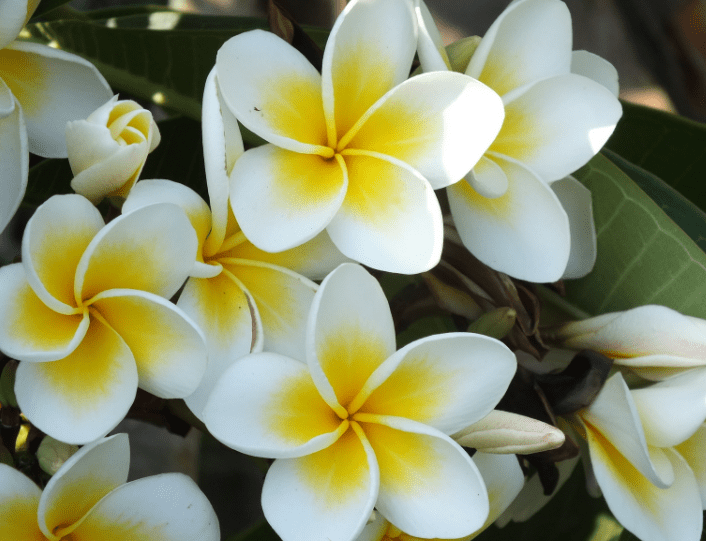Jasmine – Botanical Name: Jasminum Nudiflorum
Jasmine is a fast-growing tough, reliable, hardy ornamental shrub that is drought tolerant and will grow in poor soils. I believe it is underused in today’s landscapes.
This low-growing (3 to 4 feet high by 4 to 7 feet wide) deciduous shrub has a spreading and arching habit.
It is told the sights and smells of our childhood evoke memories throughout our lifetime, and it is never also true for me other than seeing and smelling the green-flowering jasmine vine or shrubbery.
My grandma managed to have a yellow flowering shrub advancing over a huge dog kennel that lurked a huge dog.
As mischievous children, we rejoiced in jumping from the tank stand onto the roof of the kennel to make the dog bark and yap.
Oh, what memoirs we have of going indoors covered in the sweet odor of the jasmine flowers.
The name comes from an old Persian name, and they relate it to the olive tree.
Perennial shrubs or climbers with twining stems and leaves, jasmine have flowers of white or yellow that are short-lived but so plentiful they produce a fragrant cloud of flowers for several months.
There are about 300 species of jasmine.
THE BIRDS AND BEES
Birds, butterflies, and bees are madly attracted to jasmine flowers, and native and exotic birds readily eat the occasional fruits (seed containers).
Exotic jasmine – semi-evergreen shrubs and climbers – are native to Africa and Southeast Asia. They have bred all to perfect flowering quantity and scent over many thousands of years of cultivation. They even mentioned jasmines in the Bible and Shakespeare’s works.
PLANTING
If trained vertically on a trellis or wall, it can grow up to 15 feet. The fine-textured slender bright green stems give an impression of evergreen and are a contrast to the browns and gray of the winter landscape.
The small bright yellow flowers, though unscented, are almost impervious to the weather and start blooming in December. They continue until early March.
The flowers and the emerald green foliage are great for cutting and placing in arrangements.
GROWING TIPS
Winter Jasmine will grow in full sun to partial shade. It prefers well-drained soil but will tolerate a wide range of growing conditions. Winter Jasmine is a vigorous grower, so it will need to be pruned back (after flowering) to 6 inches every 3 to 4 years to rejuvenate and keep the plant under control.
Cutting back will also prevent bare patches from appearing. The trailing branches of Winter Jasmine will root wherever they touch the soil, so it is easily propagated.
You can also take cuttings from May to July and no rooting hormone is needed.
CUTTINGS
We can quickly grow Jasmine from semi-hardwood cuttings taken at this time of the year (with a green/brown tinge to
the stem) and prune cuttings from the parent plant 30- 45cm long.
BEST BUYS
Jasmine has a good, long (one to three months) flowering period, but for the rest of the year, it just sits in the background with its shiny green leaves on display.
Why not choose variegated jasmine for year-round leaf
color, with the bonus of a couple of months flowering in spring/early summer. You could try Jasminum
Officinale cv. Aureo variegatum is a vigorous climber with gold and green variegated foliage and white spring flowers.
The second most popular jasmine growing over the fence or backyard dunny is J. polyanthum. It is a free-flowering climber with large flower heads, highly perfumed white flowers, and exquisite pink buds. It provides a fantastic contrast and is probably one of the highest-scented flowers in your spring garden.
J. polyanthum cv. Perfumed Princess is a cultivar of the above plant with attractive variegated foliage of grey and cream. It is different and has strongly scented flowers.
Consider the climbing Windmill Jasmine – J. nitidum – a bushy, semi-climbing plant with fewer white perfumed flowers.
SHRUB JASMINE
The Japanese Jasmine – J. mesnyi – is the large, bushy shrub with arching branches that used to cover my grandmother’s dog kennel.
With primrose to yellow-colored flowers, it will cover any low object in your garden with the most beautiful spring-scented flowers.
J. humile is another attractive shrub with bright, yellow-perfumed flowers.
J. sambac cv. Flore Pleno
has double white flowers and a bushy habit.
And for something completely different, J. x stephanense is a hybrid with vigorous vine-like qualities and masses of rose-pink flowers in spring.
LANDSCAPE VALUE
Winter Jasmine can be allowed to scramble freely over a low wall or bank and looks great in mass plantings. One might use it to cover the “bare” legs of shrubs as well.
There are more than 200 species in the genus, but there are only a few available for purchase. Michael Dirr lists a green and white variegated cultivar called Mystique and one called Aureum with golden-green foliage.
In the Memphis area, I have seen only one species, the Aureum.
AVAILABILITY
There is no excuse for your nursery being unable to buy any of the plants I mention in this column.
With the internet online order and fast road transport, your jasmine plant, or for that matter any other species of plant you desire, can be road- freighted to your home within a couple of days.
There is always an added expense, but who cares when you are a plant addict like I am.
Good gardening, everyone.


























